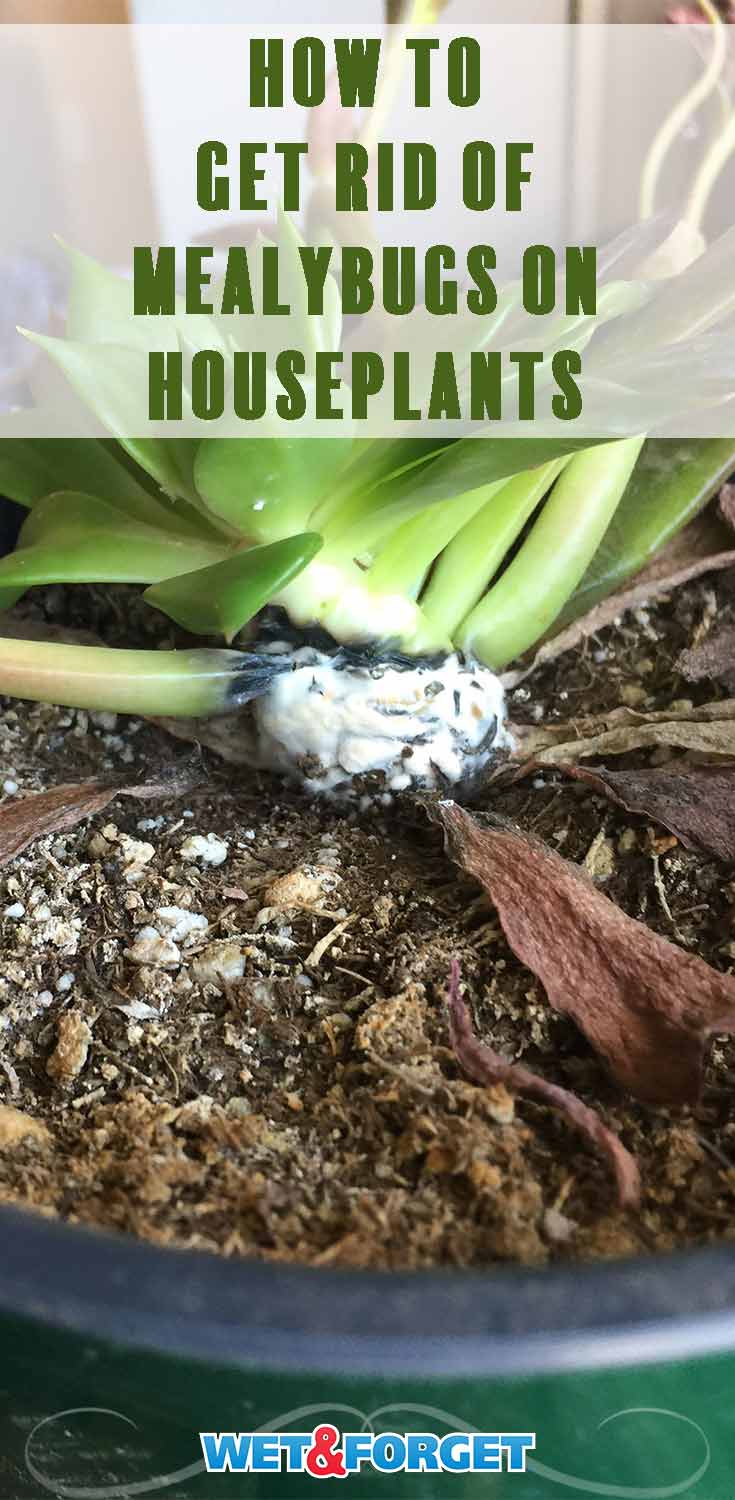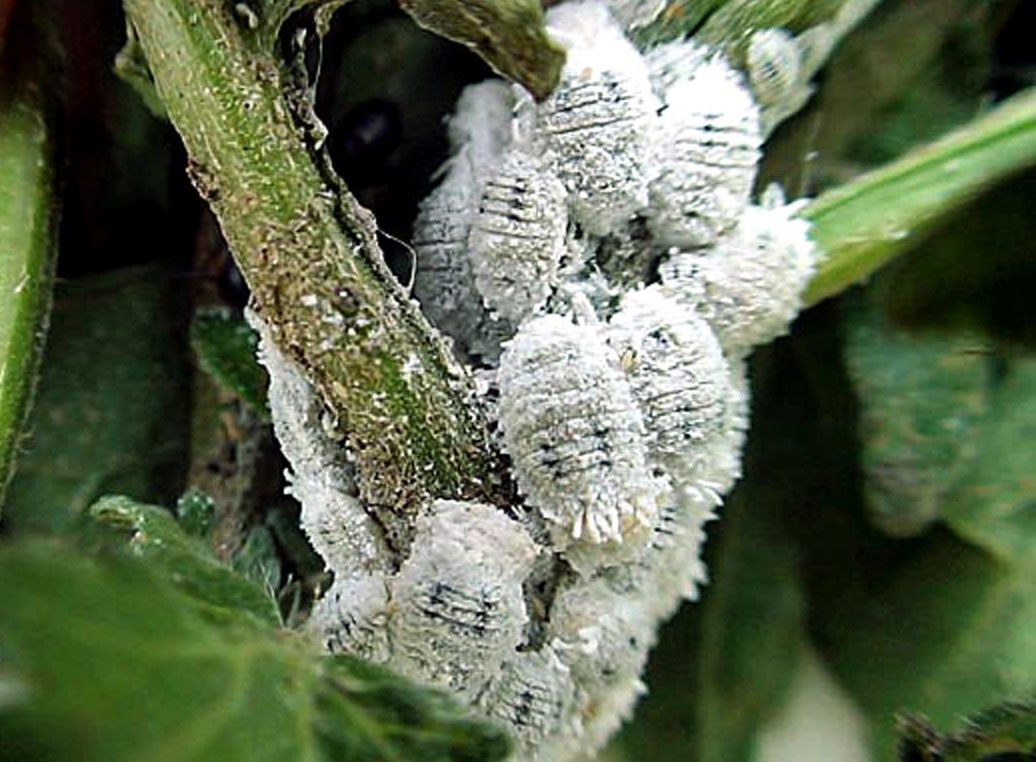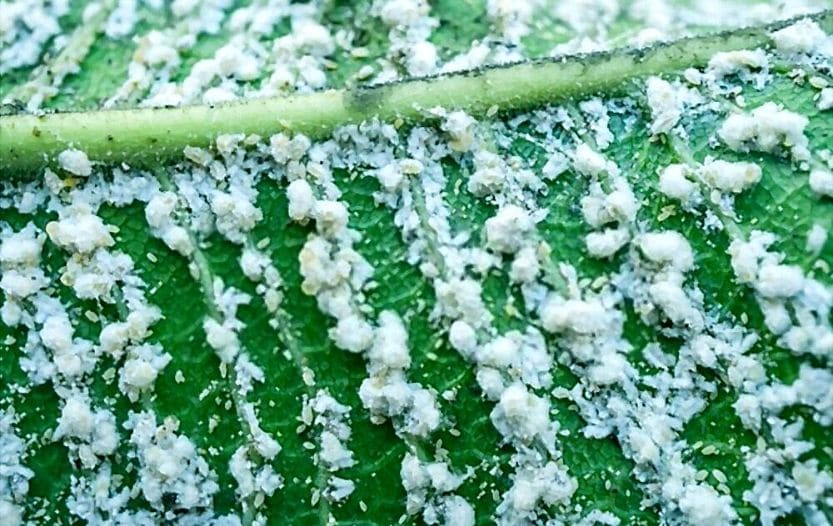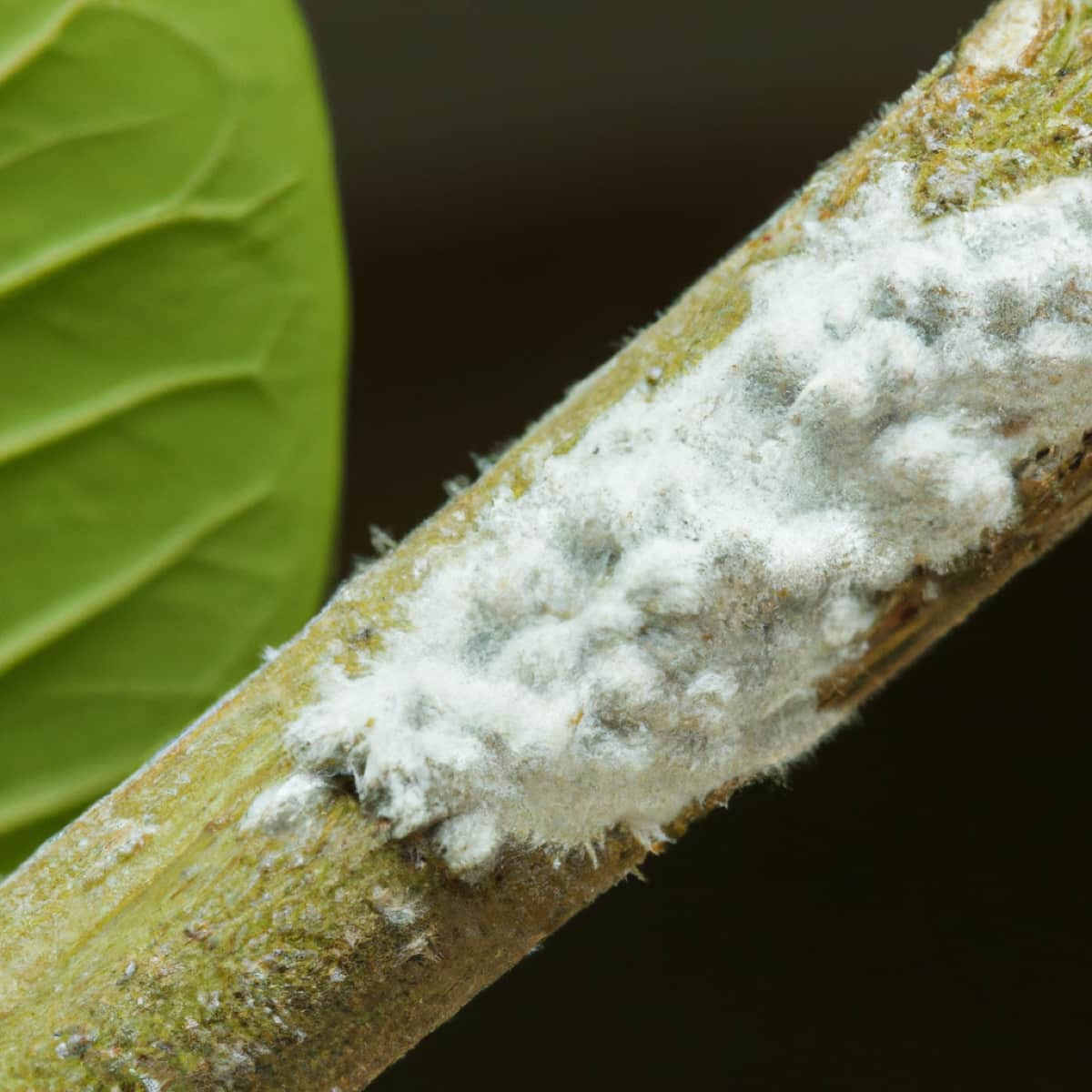Inspect and Isolate: The First Steps to Mealybug Control
Inspecting plants regularly for signs of mealybugs is crucial to preventing infestations from spreading. Mealybugs can be difficult to spot, especially in the early stages of infestation, but there are several signs to look out for. Check for white, cottony patches on the leaves, stems, and soil, as well as sticky honeydew droplets on the leaves and surrounding surfaces.
When inspecting plants, pay particular attention to areas where mealybugs tend to congregate, such as the undersides of leaves, the soil surface, and the joints where leaves meet the stem. Use a magnifying glass or a handheld lens to get a closer look, and gently turn over leaves to inspect the undersides.
If you suspect that a plant is infested with mealybugs, isolate it immediately to prevent the infestation from spreading to other plants. Move the infested plant to a separate area, such as a quarantine room or a designated isolation area, and keep it away from other plants until the infestation has been brought under control.
Isolating infested plants is a critical step in preventing the spread of mealybugs, as these pests can easily migrate to other plants through contact or by crawling. By isolating infested plants, you can prevent the infestation from spreading and reduce the risk of mealybugs developing resistance to pesticides.
Soap Solution: A Gentle yet Effective Mealybug Killer
Mild dish soap can be used as a natural pesticide to control mealybugs on plants. This method is gentle and non-toxic, making it a great option for gardeners who want to avoid using harsh chemicals. To make a soap solution, mix 1 tablespoon of mild dish soap with 1 quart of water. Stir the solution well and spray it on the infested plants, making sure to cover all surfaces, including the undersides of leaves and the soil.
When using a soap solution to get rid of mealybugs on plants naturally, it’s essential to use a mild dish soap that is free of additives and fragrances. Avoid using antibacterial or antifungal soaps, as these can harm the plants. Also, make sure to test the soap solution on a small area of the plant before applying it to the entire plant to ensure that it doesn’t cause any damage.
The soap solution works by breaking down the mealybug’s exoskeleton and dehydrating them, ultimately killing them. This method is most effective when used in combination with other natural methods, such as isolating infested plants and pruning infested areas. By using a soap solution as part of a comprehensive approach to mealybug control, gardeners can effectively get rid of mealybugs on plants naturally.
Neem Oil: A Natural Insecticide for Mealybug Control
Neem oil is a natural insecticide that can be used to control mealybugs on plants. Derived from the seeds of the neem tree, neem oil has been used for centuries to control a wide range of pests, including mealybugs. Neem oil works by disrupting the mealybug’s hormonal system, preventing them from reproducing and eventually killing them.
To use neem oil to get rid of mealybugs on plants naturally, mix 2 tablespoons of neem oil with 1 quart of water. Stir the solution well and spray it on the infested plants, making sure to cover all surfaces, including the undersides of leaves and the soil. Repeat the application every 7-10 days to ensure that all stages of the mealybug life cycle are targeted.
Neem oil is a gentle and non-toxic pesticide that can be used on a wide range of plants, including vegetables, fruits, and flowers. However, it’s essential to use neem oil in the evening or on cloudy days to avoid burning the plants’ leaves. Also, make sure to test the neem oil solution on a small area of the plant before applying it to the entire plant to ensure that it doesn’t cause any damage.
Neem oil can be used in combination with other natural methods, such as soap solution and pruning, to create a comprehensive approach to mealybug control. By using neem oil as part of a balanced approach, gardeners can effectively get rid of mealybugs on plants naturally and maintain a healthy and thriving garden.
Encourage Beneficial Insects: A Long-Term Solution to Mealybug Control
Encouraging beneficial insects, such as ladybugs and lacewings, is a long-term solution to mealybug control. These beneficial insects prey on mealybugs, helping to control their populations and prevent infestations. By attracting these beneficial insects to the garden, gardeners can create a balanced ecosystem that is less susceptible to mealybug infestations.
To attract beneficial insects to the garden, plant a diverse range of flowers and herbs that provide nectar and pollen, such as marigolds, sunflowers, and dill. Avoid using pesticides, which can harm or kill beneficial insects. Instead, use natural methods of pest control, such as soap solution and neem oil, which are gentle and non-toxic.
Another way to encourage beneficial insects is to provide them with shelter and habitat. Plant native plants, such as shrubs and trees, which provide shelter and food for beneficial insects. Avoid using invasive plants, which can outcompete native plants and harm beneficial insects.
By encouraging beneficial insects, gardeners can create a long-term solution to mealybug control. This approach may take longer to achieve results, but it is a sustainable and environmentally friendly way to control mealybug populations. By combining this approach with other natural methods, such as soap solution and neem oil, gardeners can effectively get rid of mealybugs on plants naturally and maintain a healthy and thriving garden.
Prune and Dispose: Removing Infested Areas
Pruning and disposing of infested areas is an essential step in controlling mealybug populations. By removing infested areas, gardeners can prevent the mealybugs from spreading to other parts of the plant or to other plants in the garden. Pruning also helps to reduce the number of mealybugs on the plant, making it easier to control the infestation.
To prune infested areas, use clean and sharp pruning tools to remove any leaves, stems, or flowers that are heavily infested with mealybugs. Make sure to disinfect the pruning tools between cuts to prevent the spread of mealybugs. Dispose of the infested areas in a sealed bag or by burning them to prevent the mealybugs from escaping and infesting other plants.
When pruning infested areas, make sure to prune at the node, which is the point where the leaf meets the stem. This will help to prevent the mealybugs from spreading to other parts of the plant. Also, make sure to prune in the morning, when the mealybugs are most active, to increase the chances of removing as many mealybugs as possible.
By pruning and disposing of infested areas, gardeners can effectively control mealybug populations and prevent the infestation from spreading. This method is most effective when used in combination with other natural methods, such as soap solution and neem oil, to create a comprehensive approach to mealybug control.
Prevention is Key: Tips for Preventing Mealybug Infestations
Preventing mealybug infestations is key to maintaining a healthy and thriving garden. By taking a few simple steps, gardeners can reduce the risk of mealybug infestations and avoid the need for costly and time-consuming treatments.
One of the most effective ways to prevent mealybug infestations is to use physical barriers. Covering plants with fine-mesh screens or fine-netting can prevent mealybugs from reaching the plants and laying eggs. This method is particularly effective for plants that are prone to mealybug infestations, such as succulents and cacti.
Maintaining good garden hygiene is also essential for preventing mealybug infestations. Remove any debris or weeds that may be harboring mealybugs, and dispose of any infested plants or plant parts. Regularly inspecting plants for signs of mealybugs and taking action quickly can also help to prevent infestations from spreading.
Avoiding over-fertilization is also important for preventing mealybug infestations. Mealybugs are attracted to plants that are high in nitrogen, so avoiding over-fertilization can help to reduce the risk of infestation. Additionally, using organic fertilizers that are low in nitrogen can help to promote healthy plant growth and reduce the risk of mealybug infestations.
By taking these simple steps, gardeners can reduce the risk of mealybug infestations and maintain a healthy and thriving garden. Remember, prevention is key to avoiding costly and time-consuming treatments, so take action today to protect your plants from mealybugs.
A Natural and Balanced Approach to Mealybug Control
Getting rid of mealybugs on plants naturally requires a balanced approach that incorporates multiple methods. By using a combination of the natural methods discussed in this article, gardeners can effectively control mealybug populations and maintain a healthy and thriving garden.
A balanced approach to mealybug control involves using a combination of physical, cultural, and biological methods. Physical methods, such as pruning and disposing of infested areas, can help to reduce the number of mealybugs on the plant. Cultural methods, such as maintaining good garden hygiene and avoiding over-fertilization, can help to prevent mealybug infestations from occurring in the first place. Biological methods, such as encouraging beneficial insects and using neem oil, can help to control mealybug populations and prevent infestations from spreading.
By using a combination of these methods, gardeners can create a natural and balanced approach to mealybug control that is effective and sustainable. Remember, getting rid of mealybugs on plants naturally takes time and patience, so be sure to monitor your plants regularly and take action quickly if you notice any signs of infestation.
By following the tips and methods outlined in this article, gardeners can learn how to get rid of mealybugs on plants naturally and maintain a healthy and thriving garden. Whether you’re a seasoned gardener or just starting out, these natural methods can help you to control mealybug populations and keep your plants healthy and strong.
A Natural and Balanced Approach to Mealybug Control
Getting rid of mealybugs on plants naturally requires a balanced approach that incorporates multiple methods. By using a combination of the natural methods discussed in this article, gardeners can effectively control mealybug populations and maintain a healthy and thriving garden.
A balanced approach to mealybug control involves using a combination of physical, cultural, and biological methods. Physical methods, such as pruning and disposing of infested areas, can help to reduce the number of mealybugs on the plant. Cultural methods, such as maintaining good garden hygiene and avoiding over-fertilization, can help to prevent mealybug infestations from occurring in the first place. Biological methods, such as encouraging beneficial insects and using neem oil, can help to control mealybug populations and prevent infestations from spreading.
By using a combination of these methods, gardeners can create a natural and balanced approach to mealybug control that is effective and sustainable. Remember, getting rid of mealybugs on plants naturally takes time and patience, so be sure to monitor your plants regularly and take action quickly if you notice any signs of infestation.
By following the tips and methods outlined in this article, gardeners can learn how to get rid of mealybugs on plants naturally and maintain a healthy and thriving garden. Whether you’re a seasoned gardener or just starting out, these natural methods can help you to control mealybug populations and keep your plants healthy and strong.
In conclusion, a natural and balanced approach to mealybug control is the key to maintaining a healthy and thriving garden. By using a combination of physical, cultural, and biological methods, gardeners can effectively control mealybug populations and prevent infestations from occurring in the first place. So why not give these natural methods a try and see the difference for yourself?








:max_bytes(150000):strip_icc()/how-to-control-mealybugs-1902890-hero-7d22571facd44a9a808aef1317462629.jpg)